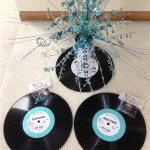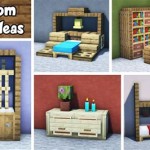Home Decor Ideas: Wallpaper
Wallpaper, once considered a dated and outdated décor element, has experienced a resurgence in popularity in recent years. It offers a unique and versatile way to add character, depth, and visual interest to any room. From bold and vibrant patterns to subtle textures and muted hues, the options available in today's market are practically limitless. This article will explore some of the key ways wallpaper can enhance your home decor, offering practical tips and inspiring ideas to transform your spaces.
1. Setting the Mood and Style
Wallpaper is a powerful tool for defining the mood and style of a room. The choice of pattern, color, and texture can significantly impact the overall ambiance. For instance, a large-scale floral print in vibrant hues can create a bold and energetic statement, while a subtle geometric pattern in muted tones can foster a sense of calm and sophistication. Consider the desired aesthetic for your space and select wallpaper that complements the furniture, lighting, and other decorative elements.
Here are some examples of how wallpaper can shape the mood of a room:
- Romantic and Ethereal: Soft, pastel-colored floral patterns, delicate botanical illustrations, or dreamy watercolor designs can evoke a sense of romance and ethereal beauty.
- Bold and Modern: Geometric patterns, abstract designs, or graphic prints in bold colors can create a statement and inject modern energy into a space.
- Classic and Elegant: Damask patterns, traditional floral motifs, or textured wallpaper in neutral tones can add a touch of classic elegance and sophistication.
- Rustic and Cozy: Woodgrain textures, natural fiber patterns, or rustic-inspired floral designs can create a warm and cozy ambiance reminiscent of nature.
2. Creating Focal Points and Defining Areas
Wallpaper can effectively draw attention to specific areas within a room, creating visual focal points or subtly defining different zones. For example, applying wallpaper to a single wall behind a sofa or headboard can create a visually captivating backdrop and instantly upgrade the aesthetic of the space. Wallpaper can also be used to delineate separate areas within an open-plan layout. A patterned wallpaper in the dining area can visually set it apart from the adjacent living room, while a contrasting pattern in the reading nook can create a distinct and inviting space.
Here are some practical tips for using wallpaper to create focal points and define areas:
- Highlight a Feature Wall: Choose a statement wallpaper to create a dramatic focal point in a living room, bedroom, or dining area. This can be a wall behind the sofa, headboard, or dining table.
- Define a Feature Area: Use wallpaper to distinguish different zones within an open-plan space, such as a kitchen island, a home office, or a reading nook.
- Highlight Architectural Elements: Accentuate existing architectural features, like a fireplace surround, built-in shelves, or a window frame, with a contrasting wallpaper.
3. Adding Depth and Dimension to Walls
Wallpaper can significantly enhance the visual depth and dimension of a room. The choice of pattern and texture plays a crucial role in creating this effect. For instance, a textured wallpaper with raised elements can add a tactile dimension to a flat wall, while a large-scale pattern can make a small room feel larger. A wallpaper with a subtle pattern or a trompe l'oeil effect can create a sense of movement and visual interest, adding character and intrigue to the space.
Here are some ways to use wallpaper to add depth and dimension to walls:
- Textured Wallpaper: Choose wallpaper with raised elements, such as embossed patterns or woven textures, to add depth and tactile interest to the walls.
- Large-Scale Patterns: Using large-scale patterns can create a sense of space and dimension, especially in small rooms.
- Trompe l'oeil Effects: Consider wallpaper with optical illusions, such as trompe l'oeil designs that mimic architectural elements or landscapes, to add visual depth and intrigue.
- Murals and Scenic Views: Adding murals or scenic wallpapers can transform a wall into a captivating focal point and create a sense of depth and immersion.
4. Incorporating Color and Pattern
Wallpaper offers endless possibilities for introducing color and pattern into a space. Whether you prefer bold and vibrant hues, subtle pastels, or a mix of both, a wide range of options are available to match any stylistic preference. Wallpaper can also be used to create a cohesive color palette, tying together different elements in a room. For instance, a patterned wallpaper can be used to introduce key colors that are then echoed in the furniture, accessories, and artwork.
Here are some tips for incorporating color and pattern with wallpaper:
- Create a Color Palette: Choose a wallpaper pattern that introduces a few key colors, then incorporate those colors into your furniture, rugs, and accessories to create a cohesive and harmonious look.
- Mix and Match: Don't be afraid to experiment by mixing and matching different wallpaper patterns and textures. For instance, you can use a bold geometric pattern on one wall and a more subtle floral design on an adjacent wall.
- Use Wallpaper as a Neutral: Consider a wallpaper that features a subtle pattern or a neutral color scheme, creating a calming and sophisticated backdrop for your furniture and decor.
- Embrace Bold Colors: If you're looking to make a statement, go for wallpaper with bold colors and graphic patterns to create a vibrant and energetic atmosphere.
5. Choosing the Right Wallpaper
With so many styles and options available, choosing the right wallpaper can seem overwhelming. Consider the following factors to make an informed decision that aligns with your personal style and the needs of your space:
- Room Size and Purpose: Consider the size and purpose of the room when selecting a wallpaper pattern. Small-scale patterns generally work well in small spaces, while large-scale patterns can make larger rooms feel more intimate.
- Lighting Conditions: Think about how natural light affects the room. Dark or highly patterned wallpaper can make a space feel smaller and more cramped, especially in low-light conditions. Consider opting for lighter hues or subtle patterns in rooms that receive limited sunlight.
- Texture and Material: Different types of wallpaper offer unique textures and finishes. Textured wallpapers can add dimension and interest to walls, while smoother options provide a more polished look. Consider the level of durability and maintenance needed for the specific location and desired aesthetic.
- Ease of Installation: Some wallpapers are easier to install than others. Pre-pasted wallpaper is generally more user-friendly, while hand-pasted options require more experience and care. Consider your skill level and available resources when selecting a wallpaper.
In conclusion, wallpaper offers a versatile and creative way to enhance your home decor, transforming walls into stunning features that can set the mood, define areas, add depth and dimension, and incorporate color and pattern. By carefully considering the factors mentioned above, you can select the perfect wallpaper to bring your design vision to life and create a space that reflects your personal style and preferences.

20 Modern Bedroom Wallpaper Design Ideas Designcafe

20 Inspiring Living Room Wallpaper Ideas Best Decorating

Contemporary Wallpaper Ideas

Best Wallpaper Design Ideas For Bedroom Walls Designcafe

Wallpaper Ideas House Garden

25 Awesome Rooms That Inspire You To Try Out Geometric Wallpaper Decoist

Beautiful Ideas For How To Use Wallpaper In Modern Home Decor

Living Room Wallpaper 31 Ideas

20 Fabulous Wallpapers That Will Spruce Up Your Home Decor

45 Bedroom Wallpaper Ideas That Will Bring Instant Beauty To Your Boudoir
Related Posts







